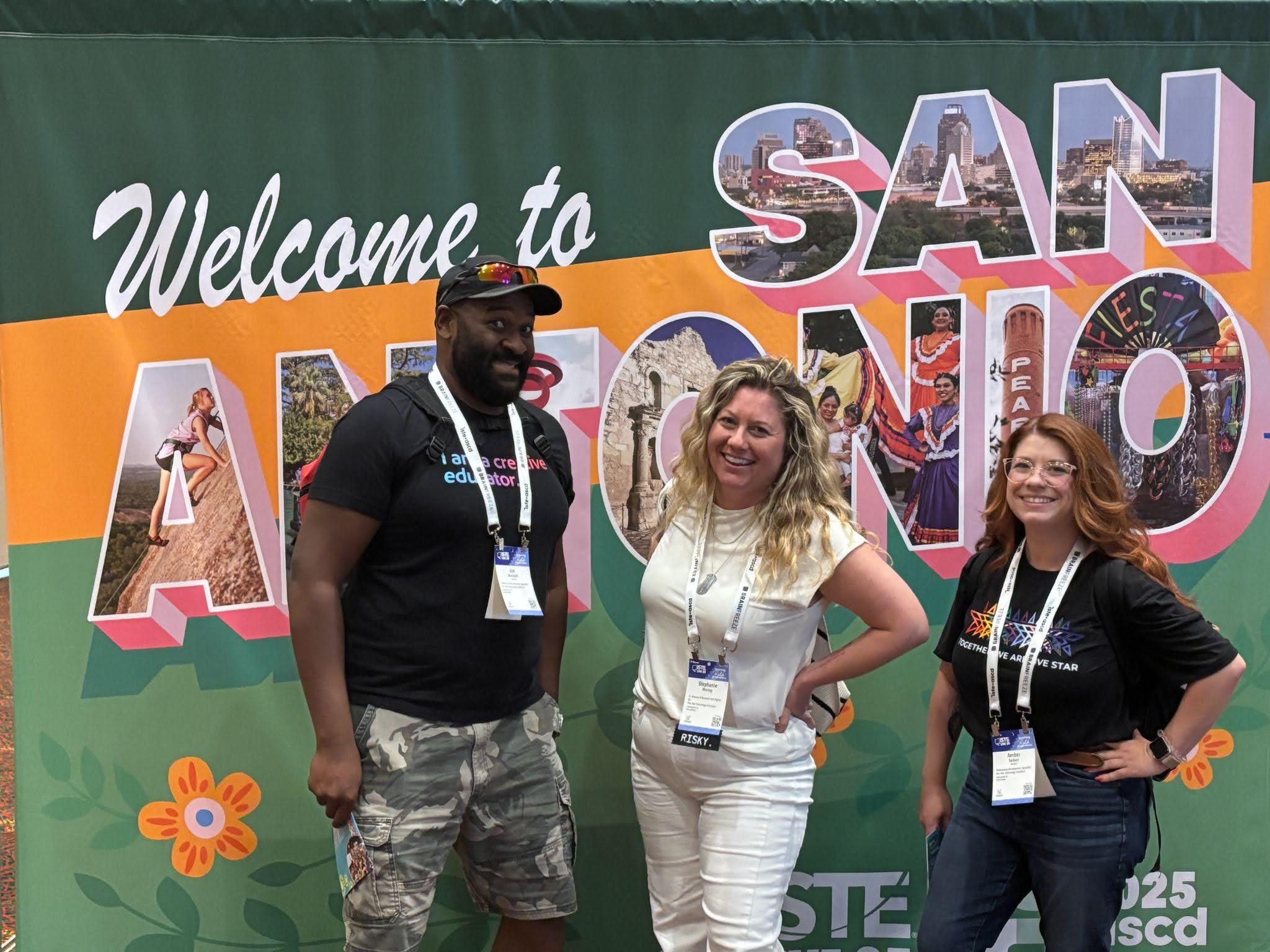Back from ISTE 2025: Centering Purpose in AI and Professional Learning

By: Stephanie Waring, Joe Marshall and Amber Seibert
Three of us from the Five Star team, all of us new to ISTE, explored the San Antonio 2025 exhibit hall with eyes open wide, listened in on sessions, and soaked up all of that frenetic ISTE energy. After we took off our cowboy hats and unpacked our suitcases, one theme stuck with us more than any one tool or session: AI integration is most powerful when it begins with purpose. There’s no shortage of new platforms or ideas when it comes to AI. These developments are, of course, incredibly exciting. However, with this proliferation of AI tools, educators need to shift from What’s the newest thing? to What do we actually need?
Let the Work Lead, Not the Tool
One of our mantras at Five Star is “avoid tech for tech’s sake.” This frame is more important than ever when we consider the use of AI tools. Let the real work of teaching, learning, and leading drive the decisions about how AI tools are used instead of the other way around. Whether you’re a teacher looking to differentiate instruction or an administrator managing communication workflows, the question isn’t “Which AI tool should I try?” It’s “What am I trying to accomplish, and what tool (if any) helps me do it better?”
Educators need transparency, strategic professional learning, and collaborative planning time to define goals and to test tools that actually serve those goals. That’s how we avoid tech for tech’s sake and make meaningful progress with AI integration.
Let the Work Lead, Not the Tool
One of the things we love most about ISTE are "PD Playgrounds." These teacher-led learning opportunities align beautifully with current needs for AI professional learning. They are hands-on, practical, low-stakes, and responsive to teacher needs. In a PD Playground, educators set up stations (these could be virtual or in-person) where they offer short, focused demos of tools or strategies, followed by time to try them in context. Educators choose stations that fit their needs best and spend time at the stations they’re curious about.
Here’s how Playgrounds could work with AI tools in school settings:
- One station might walk teachers through how to use AI tools to draft differentiated exit tickets aligned to their curriculum.
- Another might explore how to use Gemini to analyze student work samples and brainstorm small group supports.
- A third could let leaders test how AI tools might generate drafts of parent communications or meeting agendas.
Playgrounds are low-pressure but high-impact. They invite curiosity, build confidence, and connect directly to daily work.
Asynchronous Learning Bursts: Respect Time, Build Readiness
To support sustained AI exploration, we can’t rely on just one-time events. Teachers need flexible, just-in-time learning that meets them where they are. That’s where asynchronous learning bursts come in.
Think:
- 3–5 minute video demos showing how to use Gemini to create reading comprehension questions.
- A quick guide to prompt engineering for writing effective learning objectives.
- A video capturing ways a teacher used AI to adapt a lesson for multilingual learners.
These bursts give teachers time to preview a strategy, reflect on its fit, and come to PLCs ready to apply or troubleshoot. They also respect time and allow for rewatching and revisiting.
"Steal My Strategy" Wall: Share What's Working, Sustain the Momentum
Purposeful use of AI tools can stall when the work is happening in isolation. The key to sustaining momentum is making wins visible. The “Steal My Strategy” wall is a simple but powerful way to break down silos and spread what’s working.
Teachers post what they’ve tried, how they used a tool, and what the result was. Make it a Padlet, a shared slide deck, or a physical board. However it’s done, the goal is to make successful use of AI tools visible, replicable, and purpose-driven. Examples could include:
- Using Diffit to simplify a text for my emerging readers.
- Prompting Gemini to write real-world math problems for a unit on percentages.
- Using AI to draft a standards-aligned rubric, then revising it with my team in our PLC.
Since the strategies are tied to real problems of practice, they invite others to try strategies that have already been successful for others.
Final Thought: Purpose First, Always
Since the strategies are tied to real problems of practice, they invite others to try strategies that have already been successful for others. As we continue to integrate AI, the question isn't "What's the latest thing?" It's "What do we need to do, and how can AI support that work?" When we build professional learning around real instructional needs, AI tools become enablers instead of distractions.
Start small. Plan together. Share often. And above all, let the work lead.




